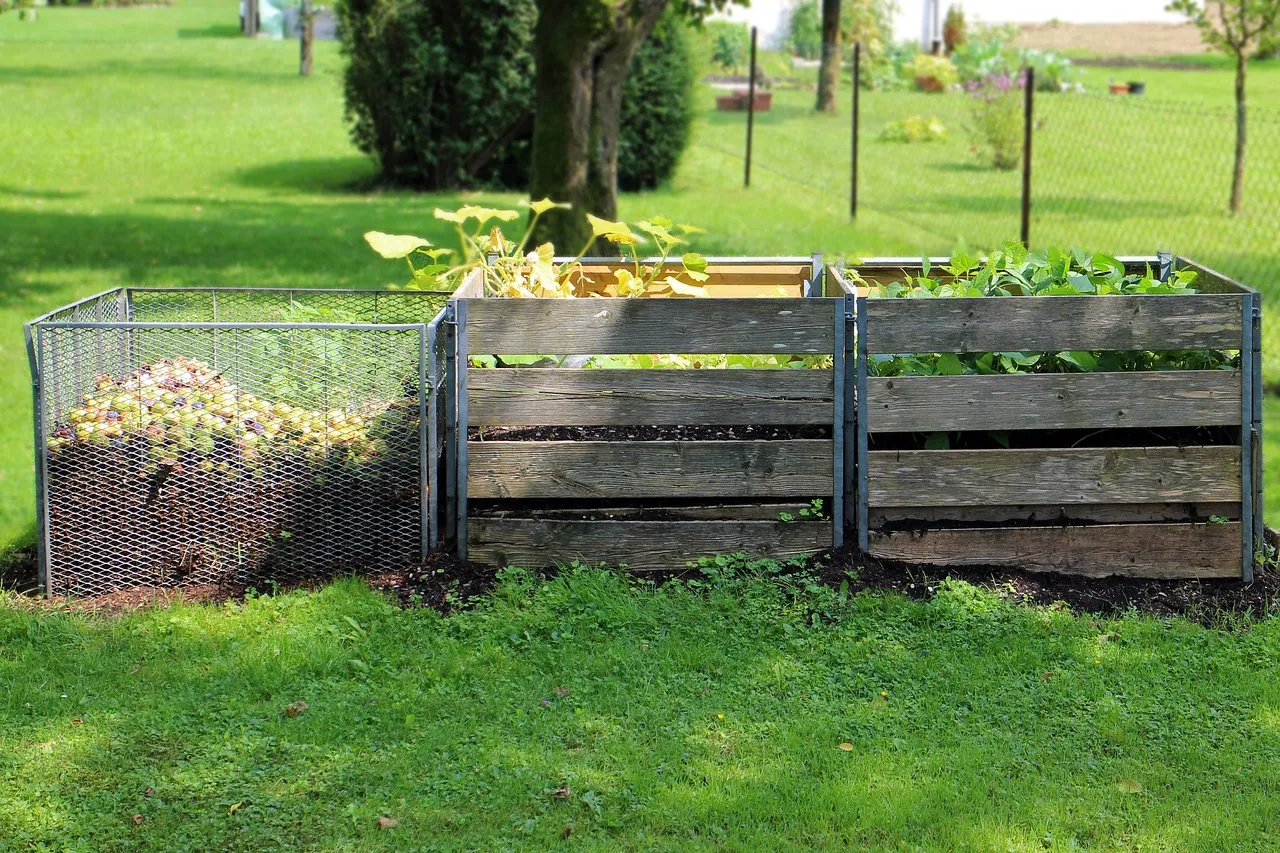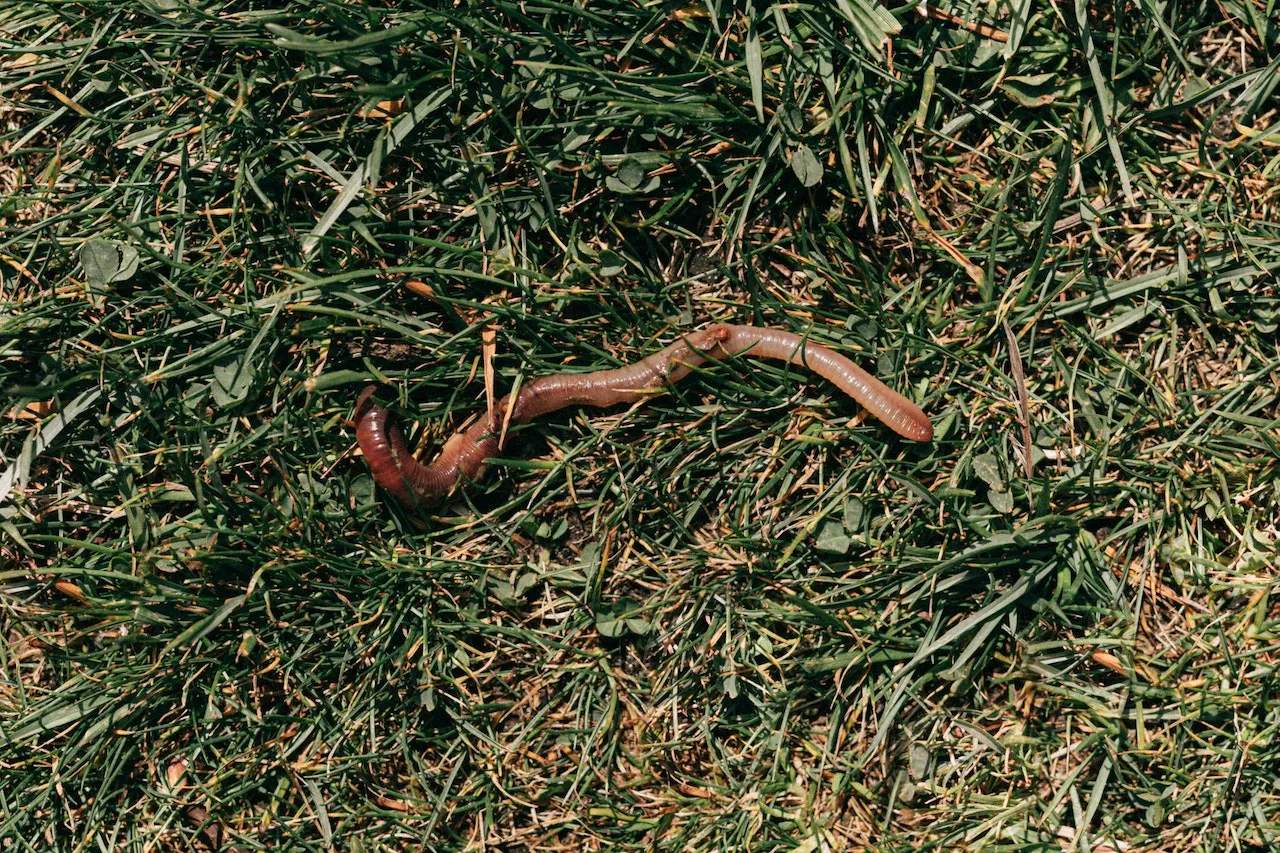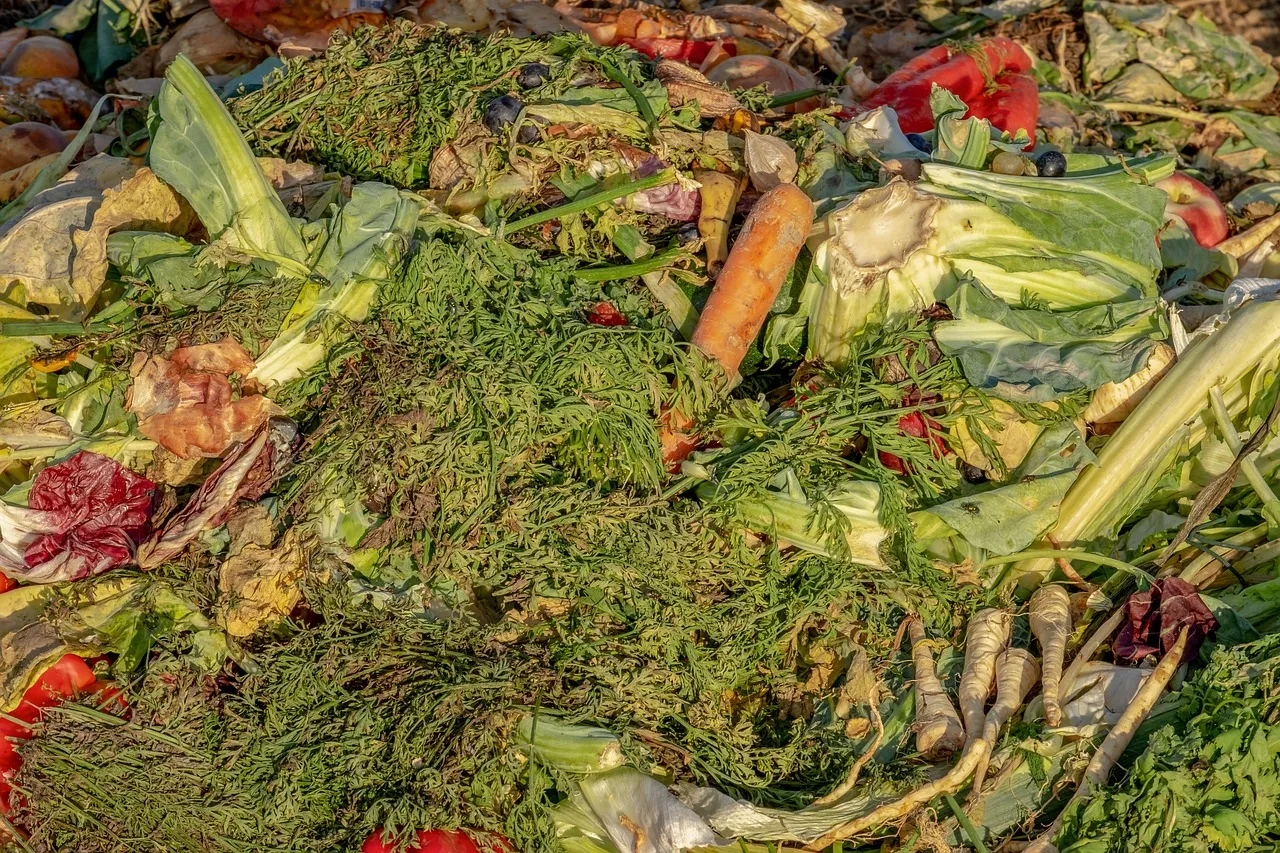Welcome to our article on “Realizing Happiness in the Garden with Compost Modernism!” You’ve come to the correct spot if you’re hoping to create a lush garden that provides you happiness, abundance, and a strong sense of connection to nature. Compost Modernism is a comprehensive and sustainable method of gardening that benefits the environment as well as the health and vitality of your plants. In this article, we’ll examine the foundational ideas of composting modernism, go deeper into its advantages, and offer helpful advice and strategies to help you use it to your gardening endeavors. Get ready to start your adventure of garden fun, renew your soil, and release the transforming power of composting. Explore how contemporary compost can make your yard a thriving haven of beauty, plenty, and sustainable living by diving in.
The Magic of Compost Modernism: Transforming Your Garden Oasis
Achieving garden bliss is every gardener’s dream, and the magic of Compost Modernism holds the key to transforming your garden oasis into a thriving haven of beauty and abundance. Compost Modernism is a revolutionary approach that harnesses the power of organic recycling to create nutrient-rich compost, which in turn nourishes the soil and fuels the growth of vibrant plants. By embracing this technique, you can unlock the secret to lush greenery, bountiful harvests, and a harmonious ecosystem within your own backyard. With Compost Modernism, you have the opportunity to cultivate a garden that not only delights the senses but also supports a sustainable and eco-friendly lifestyle. So, step into the enchanting world of Compost Modernism and discover the wonders it can work in your garden oasis.
A Step-by-Step Guide to Implementing Compost Modernism in Your Garden

Unleashing the Potential of Compost Modernism: Enhancing Soil Health
When it comes to achieving garden bliss, one cannot underestimate the transformative potential of Compost Modernism in enhancing soil health. This innovative approach goes beyond conventional gardening practices by focusing on the revitalization and nourishment of the soil ecosystem. Compost Modernism harnesses the power of organic recycling to produce nutrient-rich compost, which acts as a natural fertilizer and soil amendment. By incorporating this compost into your garden, you unleash a plethora of benefits. The organic matter in the compost improves soil structure, enhances water retention capabilities, and promotes better nutrient absorption by plant roots. Additionally, the compost encourages the growth of beneficial microorganisms that aid in breaking down organic matter and releasing essential nutrients for plants. With Compost Modernism, you can unlock the potential of your soil, creating a fertile foundation for robust plant growth, abundant blooms, and healthy yields. Say goodbye to depleted soils and welcome a flourishing garden ecosystem that truly embodies garden bliss.
Compost Modernism: The Key to Sustainable Gardening Practices
Compost Modernism stands as the key to sustainable gardening practices, opening the door to achieving true garden bliss. In a world increasingly focused on environmental consciousness, this revolutionary approach to gardening offers a powerful solution. Compost Modernism emphasizes the recycling of organic waste and the creation of nutrient-rich compost to nourish plants and promote a healthy garden ecosystem. By adopting this practice, gardeners can significantly reduce their reliance on chemical fertilizers and synthetic additives that can harm both the environment and the overall health of the garden. Compost Modernism not only enriches the soil with essential nutrients but also improves its structure and moisture-retaining capacity, reducing water consumption and the risk of soil erosion. Additionally, this sustainable technique helps to minimize waste by diverting organic materials from landfills and transforming them into a valuable resource for the garden. By embracing Compost Modernism, gardeners can play an active role in preserving the environment, promoting biodiversity, and cultivating thriving gardens that harmonize with nature.
Creating a Compost Modernism Haven: Designing Your Dream Garden
Achieving garden bliss with Compost Modernism involves not only nourishing the soil but also designing a garden that reflects your vision and dreams. Creating a Compost Modernism haven begins with thoughtful garden design that integrates the principles of sustainability and organic gardening. Start by assessing your space and envisioning how you want your dream garden to look and feel. Consider the layout, pathways, and focal points that will enhance the overall aesthetic. Integrate native plants and companion species to encourage natural pest control and promote biodiversity. Incorporate raised beds or vertical gardening techniques to optimize space and improve accessibility. Utilize natural materials for hardscaping elements, such as reclaimed wood or stone, to further emphasize the eco-friendly aspect of your garden. Maximizing the use of compost in various areas, such as mulching around plants or creating compost tea for organic fertilization, will amplify the benefits of Compost Modernism. By designing your dream garden with Compost Modernism in mind, you can create a harmonious space that not only delights the senses but also nurtures the soil, plants, and the well-being of all who enjoy the sanctuary you have created.
The Science Behind Compost Modernism: Understanding the Nutrient Cycle
Achieving garden bliss with Compost Modernism is not just about the practice itself, but also understanding the science behind it, particularly the nutrient cycle. The nutrient cycle is a fundamental ecological process that involves the movement and transformation of nutrients through various organisms and the environment. Compost Modernism capitalizes on this cycle by recycling organic waste and returning valuable nutrients back to the soil. When organic matter decomposes, microorganisms break it down into its basic components, releasing essential nutrients in the process. These nutrients, such as nitrogen, phosphorus, and potassium, are then absorbed by plants, fueling their growth and vitality. As plants complete their life cycle and eventually decay, they contribute to the organic matter that becomes part of the compost pile. This rich compost, when applied back to the garden, replenishes the soil with the nutrients needed for future plant growth. Understanding the science behind the nutrient cycle allows gardeners to appreciate the interconnectedness of all elements in their garden ecosystem. By embracing Compost Modernism, gardeners actively participate in this cycle, fostering a sustainable and self-renewing system that leads to garden bliss.
Compost Modernism for Urban Gardeners: Maximizing Small Spaces
Compost Modernism offers a world of possibilities for urban gardeners seeking to achieve garden bliss, even in limited spaces. Maximizing small spaces is a key consideration for urban gardeners, and Compost Modernism provides the means to make the most of every square inch. By implementing vertical gardening techniques, such as utilizing trellises, hanging baskets, and living walls, urban gardeners can grow an abundance of plants without sacrificing valuable space. Composting in small-scale systems, such as worm bins or bokashi composting, allows for efficient recycling of organic waste in compact urban environments. The resulting compost can be used to enrich container gardens or raised beds, providing the necessary nutrients for plants to thrive. Additionally, by integrating companion planting and utilizing intercropping techniques, urban gardeners can maximize yields and create a harmonious ecosystem within their limited garden space. Compost Modernism empowers urban gardeners to transform balconies, rooftops, and even windowsills into green havens, bringing nature’s beauty and the joy of gardening to urban landscapes. With a creative approach and the principles of Compost Modernism, urban gardeners can unlock the potential of small spaces and achieve garden bliss right in the heart of the city.
Compost Modernism Unveiled: Exploring Unique Composting Techniques
Compost Modernism unveils a world of possibilities when it comes to composting, offering a range of unique and innovative techniques that can take your garden bliss to new heights. Exploring these techniques allows us to expand our understanding of composting and its potential. One such technique is vermicomposting, which involves using earthworms to accelerate the decomposition process and produce nutrient-rich worm castings. This method is particularly beneficial for small-scale composting and can be easily implemented even in limited spaces. Another technique to explore is bokashi composting, a fermentation-based process that utilizes a special microbial mix to break down organic waste rapidly. Bokashi composting is known for its ability to handle a wide variety of food scraps, including meat and dairy products, which are traditionally challenging to compost. Additionally, compost tea brewing is gaining popularity as a way to extract the beneficial microorganisms and nutrients from compost, creating a liquid fertilizer that can be applied directly to plants. Exploring these unique composting techniques not only expands our composting repertoire but also offers us a chance to personalize our composting practices and cater to the specific needs of our gardens. By delving into the world of Compost Modernism, we open the door to exciting possibilities and pave the way for garden bliss through innovative and efficient composting techniques.

Gardening with a Purpose: Environmental Benefits of Compost Modernism
Gardening with a purpose goes beyond the aesthetic appeal of a beautiful garden. Compost Modernism offers a unique opportunity to cultivate a garden that not only brings joy but also contributes to the well-being of the environment. Embracing Compost Modernism holds numerous environmental benefits that go hand in hand with achieving garden bliss. First and foremost, composting organic waste reduces the amount of waste that ends up in landfills, minimizing greenhouse gas emissions and mitigating the environmental impact of waste disposal. By recycling organic matter, Compost Modernism helps to conserve valuable resources and closes the loop of the nutrient cycle. The use of compost as a natural fertilizer reduces the reliance on synthetic chemicals, minimizing the pollution of soil, water, and air. Compost Modernism also promotes soil health and biodiversity by enhancing soil structure, fostering beneficial microorganisms, and improving water retention capacity. As gardeners, we become stewards of the land, actively participating in sustainable practices that nurture the earth and its ecosystems. By gardening with a purpose through Compost Modernism, we contribute to a greener and healthier planet, creating a harmonious balance between our garden and the environment. Achieving garden bliss becomes not just a personal endeavor but also a meaningful journey towards environmental stewardship.
From Waste to Gold: Harvesting the Benefits of Compost Modernism
Compost Modernism truly turns waste into gold, offering a remarkable opportunity to harvest a multitude of benefits for achieving garden bliss. Through the practice of Compost Modernism, we can transform what would otherwise be considered waste into a valuable resource for our gardens. Organic waste, such as kitchen scraps, yard trimmings, and fallen leaves, can be repurposed into nutrient-rich compost through careful management and decomposition. This compost becomes the golden key to unlocking the full potential of our gardens. By incorporating compost into the soil, we enrich it with essential nutrients, improve its structure, and enhance its water-holding capacity. The result is a thriving garden with lush, vibrant plants, bountiful harvests, and a balanced ecosystem. Compost Modernism not only benefits our immediate surroundings but also contributes to a sustainable future. It reduces our ecological footprint by diverting organic waste from landfills, mitigating greenhouse gas emissions, and promoting a circular economy. From waste to gold, Compost Modernism enables us to cultivate a garden that brings us joy, sustenance, and a deep sense of connection to the natural world. Embracing this transformative practice, we unlock the true potential of our gardens, harnessing the power of nature’s own alchemy to achieve garden bliss.
Compost Modernism and Pest Control: Natural Solutions for a Healthy Garden
Modern organic fertilizers not only nourish the soil and promote plant growth, but also provide natural solutions to pest control, contributing to a healthy and growing garden. By implementing compost modernization practices, we create an environment that supports a balanced ecosystem that attracts beneficial insects, birds and other organisms that help control pests. The rich and diverse microbial activity in the soil improved with compost improves the immunity of plants, making them more resistant to pests and diseases. Additionally, compost acts as a natural mulch, creating a barrier that blocks out weeds and reduces competition for nutrients and sunlight. Composted tea, derived from steeping compost in water, can be used as a foliar spray to provide a protective coating and repel some pests. In addition, the presence of beneficial nematodes and other microorganisms in the compost helps control harmful pests, such as nematodes and soil-borne diseases. By embracing compost modernism, we take a holistic approach to gardening that values the health of the entire ecosystem. Natural pest control solutions not only protect our crops but also reduce the need for chemical pesticides, minimizing damage to beneficial insects and the environment. Compost modernism allows us to create a garden that grows in harmony with nature, where pests are managed naturally, allowing us to achieve true garden happiness. .
Compost Modernism: Revitalizing Neglected Gardens with Organic Richness
Compost Modernism breathes new life into neglected gardens, infusing them with organic richness and reviving their natural beauty. Neglected gardens often suffer from depleted soil, lack of nutrients, and poor structure, resulting in lackluster plant growth and a diminished garden experience. However, Compost Modernism offers a powerful solution to this predicament. By incorporating nutrient-rich compost into the soil, Compost Modernism replenishes vital organic matter and restores the soil’s fertility. The compost enhances soil structure, improving drainage and aeration, which in turn promotes healthier root development and optimal plant growth. As the compost decomposes, it releases essential nutrients, revitalizing the garden with a natural infusion of nourishment. Neglected gardens transform into vibrant havens bursting with life as plants thrive in the rejuvenated soil. Compost Modernism provides the means to restore neglected gardens to their former glory, infusing them with organic richness and setting the stage for garden bliss to be achieved once again.

Compost Modernism Dos and Don’ts: Common Mistakes to Avoid
When practicing Compost Modernism, it’s essential to be aware of the dos and don’ts to ensure successful and effective composting. Avoiding common mistakes will help you achieve garden bliss and make the most of your composting efforts. One crucial do is to maintain a balanced compost pile by incorporating a variety of organic materials. This includes a mix of brown materials like dried leaves or straw for carbon and green materials like kitchen scraps or grass clippings for nitrogen. Another do is to ensure proper aeration and moisture levels in the compost pile. Turning the pile regularly and keeping it adequately moist, like a damp sponge, promotes decomposition and discourages odors or pests. On the flip side, don’t add meat, dairy products, or oily foods to your compost, as they can attract unwanted critters and create unpleasant smells. Avoid adding weeds that have gone to seed or diseased plants, as this can lead to the spread of weeds or diseases in your garden. Additionally, don’t neglect the balance between green and brown materials or let the compost pile become too dry or too wet. Being mindful of these dos and don’ts will help you achieve a thriving compost pile that transforms into nutrient-rich compost, ready to bring garden bliss to your plants and soil.
Compost Modernism for All Seasons: Year-Round Gardening Tips
Compost Modernism knows no boundaries when it comes to the seasons, offering year-round gardening tips to help you achieve garden bliss regardless of the time of year. In spring, as nature awakens, it’s a prime time to rejuvenate the soil with a generous application of compost. This replenishes nutrients and prepares the garden for the upcoming growing season. Summer brings the peak of plant growth, and compost tea becomes a valuable ally in nourishing and protecting plants. Regularly feeding plants with compost tea provides a nutrient boost and enhances their natural defense mechanisms against pests and diseases. As autumn approaches, composting fallen leaves becomes a priority. Collect and compost the leaves to create a nutrient-dense leaf mold that can be used as mulch or added to the compost pile. Winter may seem like a dormant period, but Compost Modernism continues. Use indoor composting systems, such as worm bins or bokashi composting, to continue recycling organic waste and produce compost throughout the colder months. Compost Modernism is a year-round endeavor, ensuring that your garden receives the organic richness it needs to thrive in every season. By following these year-round gardening tips, you can maintain a healthy garden ecosystem, nourish your plants, and achieve garden bliss regardless of the changing seasons.
Sustainable Gardening Made Easy: Compost Modernism Simplified
Sustainable gardening doesn’t have to be complicated, thanks to the simplified approach of Compost Modernism. It offers a straightforward and accessible method for achieving garden bliss while promoting environmental stewardship. Compost Modernism simplifies sustainable gardening by focusing on the core principle of recycling organic waste through composting. It encourages the use of kitchen scraps, yard trimmings, and other organic materials to create nutrient-rich compost, which becomes the foundation for nourishing the soil and supporting plant growth. With Compost Modernism, anyone can participate in sustainable gardening practices, regardless of their gardening experience or available space. Whether you have a sprawling backyard or a small balcony, composting can be adapted to fit your needs. From traditional compost bins to worm bins and bokashi systems, there are various composting methods to suit different situations. Compost Modernism simplifies the process by breaking it down into manageable steps and providing guidelines for creating a healthy compost pile. By embracing this simplified approach, you can contribute to the health of your garden and the planet without feeling overwhelmed. Sustainable gardening becomes an achievable goal, and the rewards of achieving garden bliss through Compost Modernism are within reach for everyone.
#GardeningBliss #CompostModernism
